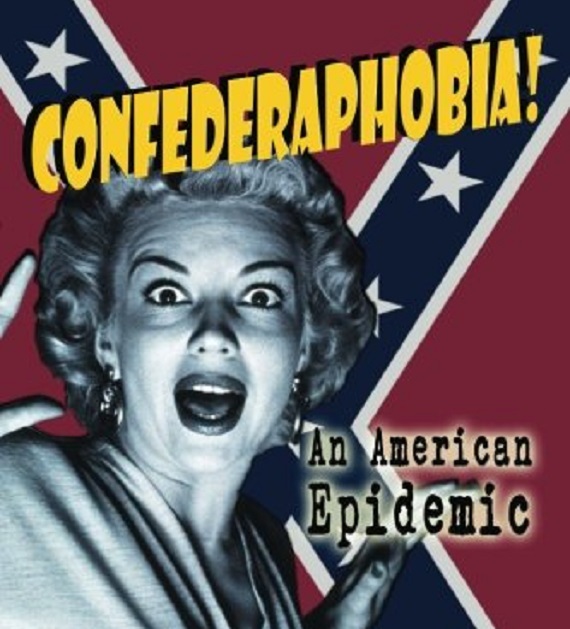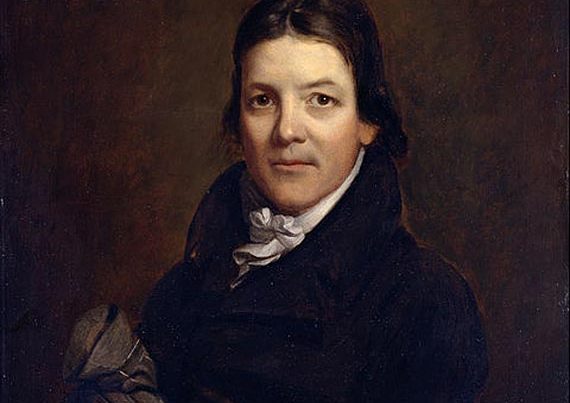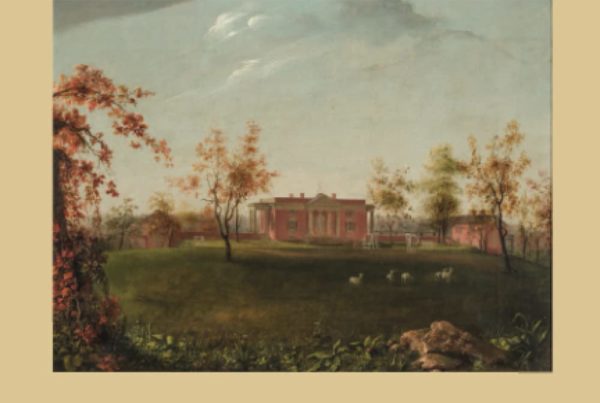A review of Confederaphobia: An American Epidemic by Paul C. Graham (Shotwell Publishing, 2017).
In a brilliant new book on one of the most important topics of our time, Paul C. Graham, the co-founder of Shotwell Publishing, tackles the recent nationwide effort to eradicate every vestige of the Confederacy from our public life. It’s a new psychological condition that he has termed “Confederaphobia.”
What is “Confederaphobia”? Graham defines it as “an irrational and pathological hatred and fear of all things Confederate.” And those that suffer from Confederaphobia, naturally, are known as Confederaphobes.
Recent years have seen numerous examples of Confederaphobia, and Graham meticulously catalogues many of the most well-known cases but some that may not be as familiar: From Linda Folckomer, a Brooklyn Yankee visiting Charleston who took it upon herself to destroy Confederate battle flags on a parked truck, to “triggering” incidents on college campuses, and retail stores dumping items with Confederate imagery.
Perhaps the silliest example of Confederate “triggering” occurred on the campus of the University of Wisconsin when a delivery truck, parked outside the student center, had a Confederate flag grill cover. Students went berserk and eventually got the administration involved. The administrators took swift action to “protect” the students from such a horrific sight. The truck was removed from campus without so much as a thought “by anyone at the university” on the trucker and “how he was affected by the hostility, inhospitality, and general lack of good manners.”
But as Graham writes, the Confederaphobe cares little for the feelings of others. They are “intolerant, hateful, self-righteous, and smug,” and can only be described as “rigid and inflexible zealots.” They are social justice warriors on a crusade to rid the nation of symbols of hate and bigotry. And who decides what is hateful and in need of removal? Why they do!
The ultimate trigger for the psychotic leftists, though, came in Charleston in 2015. The media mercilessly used Dylann Roof, the psychopath who murdered nine African-Americans in a church, to further their agenda. “Roof was and continues to be the ultimate trigger object evoked to incite hatred, fear, and demonization of the left’s long-time enemy and largest stumbling block – the conservative South,” Graham writes. “The same people who flaunt Roof as ‘proof’ of Southern racism and other moral deficiencies, continue to lecture us on being careful not to judge an entire group by the actions of an individual who may be linked to that group.”
Graham’s analysis of Dylann Roof and his exploitation by the media is spot-on and worth quoting at length:
While Dylann Roof was certainly enamoured with Southern symbols and imagery, his actions better resemble those of the Yankee terrorist John Brown than any actions attributed to Jefferson Davis or Robert E. Lee. In fact, Roof is the mirror image of Brown – both were fanatical ideologues; both wanted to incite a race war; and both were willing to shed innocent blood to accomplish their goals. Like Brown, Roof was ultimately a failure and, like Brown, he will, quite deservedly, be executed.
Dylann Roof is exactly what he was taught that he should be, not according to Southern history, tradition, or culture, but by public school textbooks, the mainstream media, and Hollywood propaganda.
Dylann Roof is every left-leaning pundit, politician, and political activist’s wet dream. If he did not already exist, they would have had to invent him. Without him, the war on Southern history and symbols would have continued as it had for the previous fifteen years – politically flaccid and morally impotent.
With the release of a photograph of Roof with a Confederate battle flag, he was “quickly seized upon and exploited by those who have long desired to see this so-called ‘controversial’ and ‘divisive’ symbol removed from public sight.”
And it seems as if Dylann Roof, and his portrayal by the leftwing media, encouraged Confederaphobes across the country to come out in force to clean up the last vestiges of the South’s culture and heritage. Roof thus proved longstanding Yankee belief: All Southerners are racists and potentially violent.
Graham also meticulously psycho-analyzes these Confederaphobes, to better understand their thought process, in such a fashion that one is quick to conclude that he missed is calling as a psychologist. These are people, he writes, that do not view their own “thoughts, actions, and/or behavior as being abnormal.” They are not crazy; everyone who disagrees with them are. He likens their mental condition to other phobias like arachnophobia, the fear of spiders. But there’s one key difference. Those who suffer from a fear of spiders don’t blame the spiders and seek to exterminate them. There is no “anti-spider movement” across the country.
Confederaphobes, on the other hand, blame not themselves for their condition but the South and Southern symbols. The problem is not with them, you see, but with someone else. And they are conditioned to be this way largely through their public education, which has largely become anti-South in the last 50 years. “The public schools now teach Southern children to be ashamed of who they are and others are taught to despise them,” he writes.
And this also begs another question and another spot-on analysis: How can outsiders, in this case the self-important Yankee, know more about the South, its history, and symbols, than Southerners do? As Graham writes, “One would not normally go to a rabbi, imam, or atheist to understand Christianity or Christian symbols.” So why do Confederaphobes not learn about the South from actual Southerners? “Southern reality,” he writes, “is a living reality,” and “Southern symbols mean to the Southerner exactly what they say that they do.”
The problem today is not the South, not Southern history, heritage, or symbols; the problem is Confederaphobia. Southerners, writes Graham, “are under no obligation to participate in our own destruction, or sit quietly while the memory of our kith and kin are slandered and insulted.” Amen!
There’s so much more in Confederaphobia: An American Epidemic, a concise book that is a must read for every Southerner who cares about his region, his history and heritage, and his proud ancestry. Reading this book will give Southerners the needed knowledge to better understand those who are bent on our destruction.







